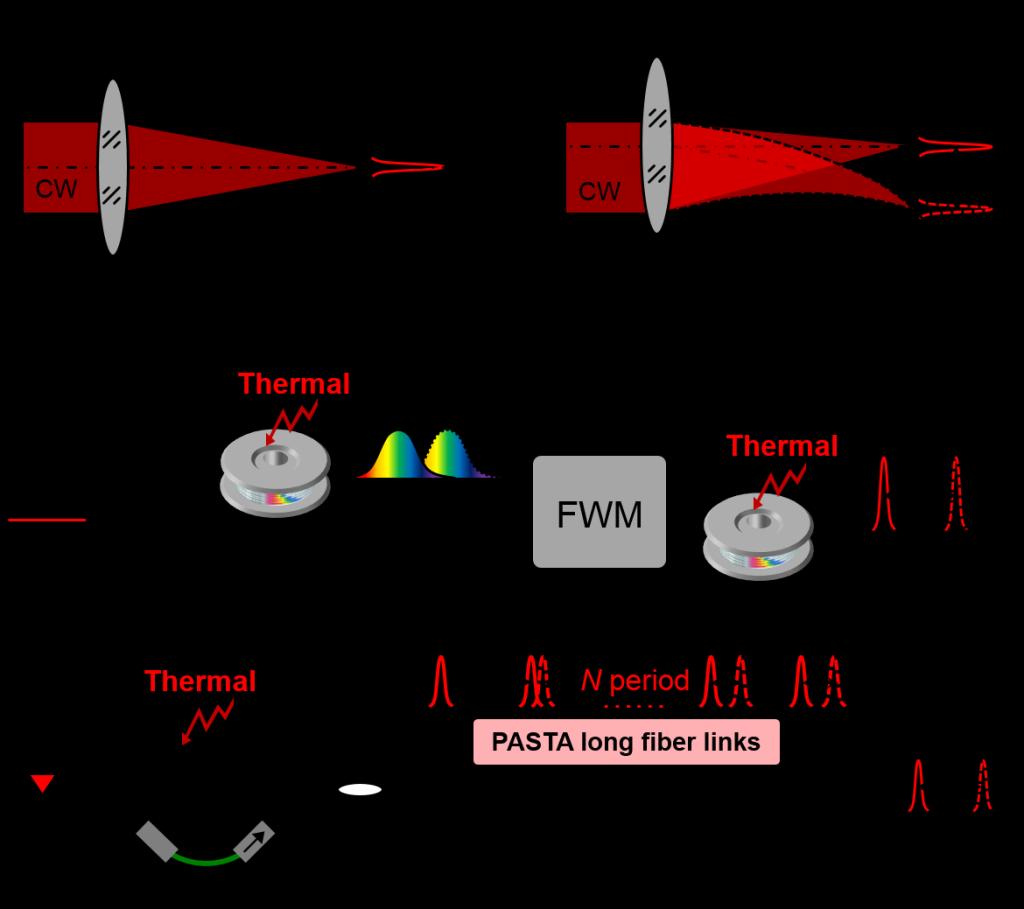Spectroscopyacts asan essential metrologytoolenable to reveal the information of the material structure. Ultrafast spectroscopy can effectively measure the variation of the material structure in real time, making it widely applied inthe laser physics and chemistry, the bio-imaging, and the optical communication system. In recent years, the advent of the dispersive stretching technology started the era of the temporal spectrum.The spectro-temporal analyzer based on temporal focusing can capture the ultrafast spectral information in real time and ensure the resolution and detection sensitivity for arbitrary waveform, which makes it of great significance for the investigation of ultrafast dynamic process. However, the spectro-temporal analyzer system is mainly composed of a parametric mixing based time-lens and large volume of dispersive fiber, which is easily affected by the dynamic environment outside the laboratory, resulting the spectral accuracy greatly degraded by the temporal instability,and it would be an obstacle for the practical application this ultrafastspectroscopy technology.
Leveragingtwo active control schemes, including the temperature feedback control for the long fiber link, and the phase-locked loop for the short laser cavity,Dr.Chi Zhangand student Haidong Zhoufrom theOptoelectronic Device and Integration Lab (OEDI), WNLO, realized thegreatly enhanced temporal stability of the spectro-temporal analyzer,and the spectral accuracy is improved from 1.6 nm to 0.04 nm over a 5-hour period of time.Theactive phase-lock loopleverages aPZT-based fiber stretcher to active stabilize the cavity length (i.e., repetition-rate).On the other hand,thetemperature feedback controlis applied to suppress the temperature fluctuation of the pump and output dispersion fiber,minimizingthe long fiber links induced timing drift.
InSeptember, 2017, the investigation result entitled “Temporal stability and spectral accuracy enhancement of the spectro-temporal analyzer,” was published inIEEE Photonics Technology Letters(vol. 29, no.22, pp.1971-1974, 2017).

Figure 1. The thermal expansion introduced temporal instability of the PASTA system.

Figure 2.The observation of the wavelength shift of the PASTA system for 5-hour period.
The work was partially supported by grants from the National Natural Science Foundation of China (Grants No. 61675081, 61505060, 61320106016, and 61125501), the NSFC/RGC Joint Research Scheme sponsored by the Research Grants Council of Hong Kong, and the National Natural Science Foundation of China (N_HKU712/16, and 61631166003), the Director Fund of WNLO.